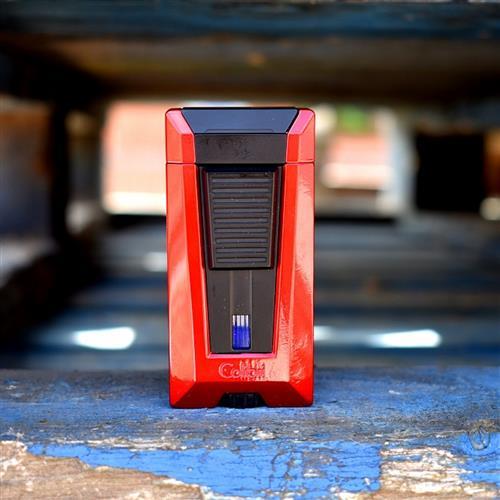Stealth
Stealth: The Unassuming Cigar
The TaylorMade Stealth. Before you ask yourself, “who is this person, and how are they qualified to review a golf club,” I’ll tell you a bit about me. I'm an ex-golf professional, now writer who has a passion for cigars.
The history of cigars dates back to the 10th Century when the Mayans were known to smoke tobacco in various forms, including cigars. However, in the 16th Century, cigars truly took precedence when the Spanish discovered the Native American Indians in Cuba smoking rolled-up tobacco leaves in a crude prototype of the cigar we know today. The Spanish were quick to recognize the potential of the tobacco trade, and soon tobacco plantations began popping up all over the Caribbean.
It was during the early 19th Century that Cuban tobacco gained its near-mythical status. The creation of the Partagas, H. Upmann, and Romeo y Julieta brands served as a turning point for Cuban cigars, setting the ball rolling for the great cigar boom.
Stealth wasn't one of those famous brands, but it was the preference of the late, great cigar writer, Richard Carleton Hacker. This brand's legend began with his discovery of the cigar on a research trip to Cuba in the early 1990s. It was a lonely brand, relatively under the radar, and didn't have the notoriety of its more well-known rivals. At least, it didn't in Cuba.
Turning Point #1: The Creation
The story of the Stealth cigar begins in Miami, Florida, where a group of Cuban exiles decided to take a chance on making cigars. They didn't have a famous name or prestige backing them up. They just had a love of tobacco and the determination to make something great — something that could rival their homeland's celebrated tobacco.
Turning Point #2: The ‘Discovery’
Richard Carleton Hacker, one of the world's greatest cigar writers, discovered Stealth on a research trip to Cuba in the early 1990s. He knew that he had found something special and introduced the cigar to the rest of the world.
Turning Point #3: The Cuban Legend
Stealth may not have been a famous Cuban cigar brand, but it had its fans in the industry. In fact, it was one of Fidel Castro's favorite cigars, and he would smoke them regularly despite his political stance against the U.S.
Turning Point #4: Coming to America
The cigars were initially only available in Florida, but they soon gained a reputation and fanbase, which led to their eventual availability across the U.S.
Turning Point #5: The Cuban Revolution
After the Cuban Revolution and the U.S. trade embargo that followed, it became increasingly difficult for Americans to get their hands on Cuban cigars. It was then that Stealth rose to even greater prominence in the U.S. market.
Turning Point #6: The Boom
During the '90s, cigar smoking entered into a golden era of prosperity and popularity, attracting new smokers and enthusiasts alike from all walks of life. Consequently, new brands, flavors, shapes, and sizes began to emerge, and Stealth became a sought-after cigar.
Turning Point #7: An Opening
The U.S. trade embargo on Cuba contributed to the rise of small-batch artisanal cigars, as American cigar makers began experimenting with alternative tobacco sources. This opened the door to lesser-known brands like Stealth, which gained greater exposure and became more popular than ever before.
There's something special about cigars. Maybe it's the mystique that surrounds them, or maybe it's the fact that consuming something carefully crafted over time is gratifying. Whatever the reason, cigars have a place in culture, and Stealth's story is one that exemplifies the triumph of will, passion, and perseverance.
